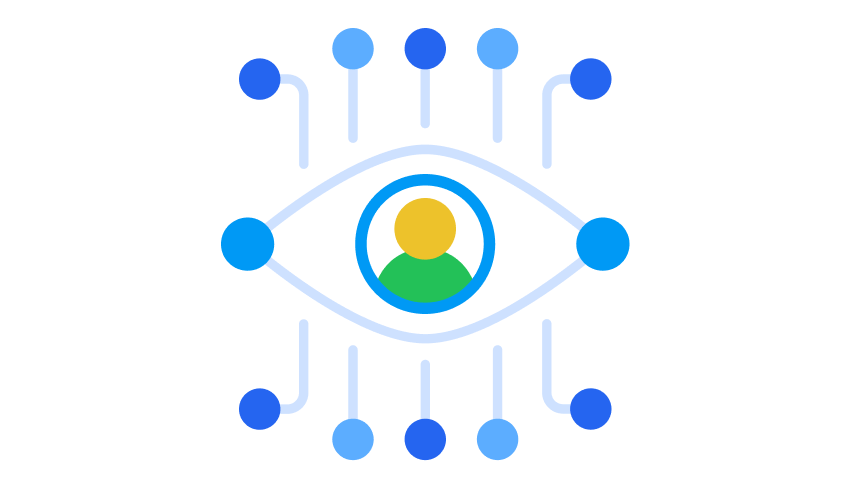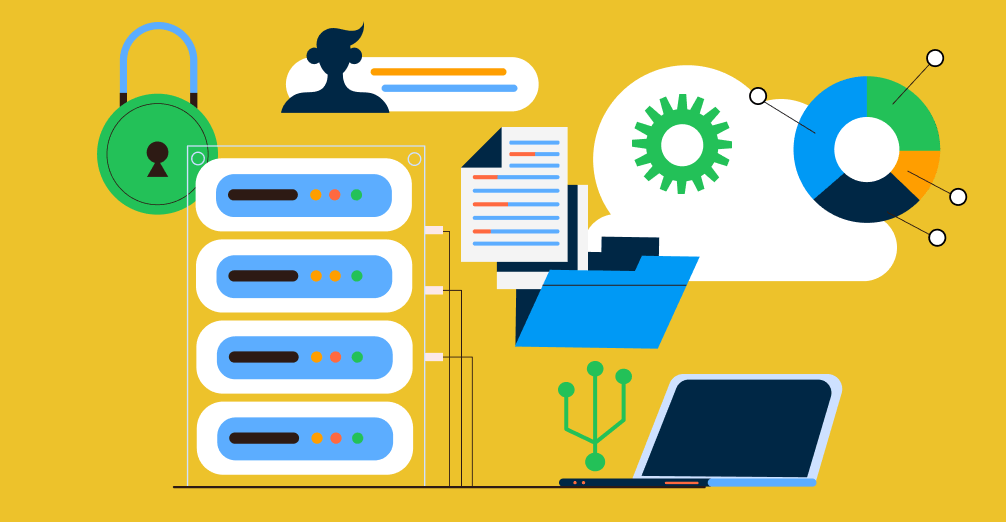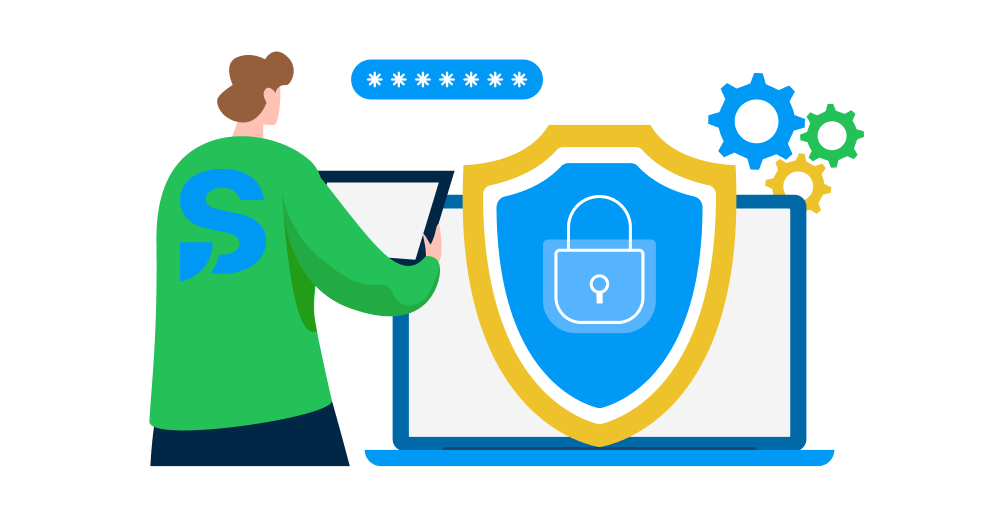Are you grappling with the challenge of safeguarding your organization's sensitive data? You're not alone. In this thorough guide, we shed light on the fundamental concepts of sensitive and personal data, offering practical insights and actionable advice.
From dissecting the nuances between types of sensitive data to outlining strategies for assessment and protection, we're here to empower you with the knowledge needed to bolster your data defences. Along the way, we'll also explore the risks associated with data leaks and provide answers to frequently asked questions, ensuring you're well-prepared to safeguard your valuable data assets.

Personal data vs sensitive data
When discussing data protection, it's important to distinguish between personal data and sensitive data.
Personal data, commonly referred to in the data protection industry as personally identifiable information (PII), is a sub-category of sensitive data that refers to any information that can be used to identify an individual, either on its own or in combination with other data.
This includes obvious identifiers such as a person's name, address, email address, social security numbers, passport numbers, driver's license numbers, and biometric data. However, personal data can also encompass less obvious identifiers, such as an IP address, social media posts, or location data obtained from a mobile device.
Sensitive data, on the other hand, refers to information that requires special protection due to its potential for harm if exposed or misused. This category includes various types of information, each with its own set of risks and considerations. Some common types of sensitive data, besides the aforementioned PII, include:
- Financial information: This category includes sensitive financial data such as bank account numbers, credit card details, and financial transactions. Exposure of this information could result in financial loss, identity theft, or fraud.
Other examples: Credit card numbers, bank account statements, investment portfolio details.
- Health records: Health-related information, including medical history, treatment records, and health insurance details, falls under this category. Unauthorized access to health records can lead to privacy violations, medical identity theft, or discrimination.
Other examples: Medical diagnoses, prescription records, laboratory test results.
- Intellectual property: Intellectual property (IP) refers to creations of the mind, such as inventions, literary and artistic works, designs, and symbols.
Other examples: Patented technologies, copyrighted works, proprietary software code.
- Confidential business data: This category includes proprietary business information that is critical to the success and competitiveness of an organization. Examples include strategic plans, customer lists, pricing information, and proprietary research.
Other examples: Business plans, marketing strategies, trade secrets.
Understanding the distinction between personal data and sensitive data is essential for implementing effective data protection measures and ensuring compliance with data privacy regulations.

Assessing data sensitivity
When it comes to protecting your company's data, understanding its sensitivity is key. This involves assessing various factors such as regulatory requirements, industry standards, and the potential consequences if the data were to be exposed. Here are some details you might consider:
- Regulatory requirements: Regulatory frameworks such as the General Data Protection Regulation (GDPR), the Health Insurance Portability and Accountability Act (HIPAA), the Gramm-Leach-Bliley Act (GLBA), and the Payment Card Industry Data Security Standard (PCI DSS) impose specific requirements for the protection of certain types of data. These regulations define categories of sensitive data and prescribe measures for its safeguarding.
For example, GDPR classifies personal data into special categories, such as health data or data revealing racial or ethnic origin, which require enhanced protection measures.
- Industry standards: Organizations operating in highly regulated industries such as finance, healthcare, or government may face additional compliance requirements and standards for protecting sensitive information. Industry guidelines often provide recommendations for data classification, access controls, encryption, and data retention policies tailored to the specific needs and risks of a particular sector.
- Business impact: The potential impact of data exposure on business operations, reputation, and financial well-being is another key consideration in assessing data sensitivity. Companies must evaluate the value of their data assets, the potential consequences of unauthorized access or disclosure, and the likelihood of data breaches occurring. High-value data assets, such as trade secrets, intellectual property, or customer databases, typically require stronger safeguards to mitigate the risks of theft, espionage, or competitive advantage.
- Data classification: Data classification help organizations categorize data based on its sensitivity, importance, and regulatory requirements. By classifying data into different tiers or levels of sensitivity, companies can apply appropriate security controls and access restrictions to protect sensitive information effectively. Data classification criteria may include factors such as confidentiality, integrity, availability, legal requirements, and business impact.
- Tip: While it may sound tedious to classify every bit of data in your organization, there is hope! You can get the vast majority of the work done by implementing a DLP software (like Safetica) that will effectively identify and classify data for you. Read more about Safetica’s data discovery capabilities. It’ll even make sure you are complying with data regulations!
- Risk assessments: Conducting regular risk assessments is essential for identifying and prioritizing potential threats to sensitive data. Risk assessment methodologies evaluate the likelihood and impact of various threats (including insider threats), vulnerabilities, and security incidents, allowing organizations to allocate resources effectively to mitigate the most significant security risks. Through these assessments, companies can identify gaps in their defences and implement targeted security measures to reduce exposure to data breaches and cyber attacks.

Strategies for protecting sensitive data
To effectively safeguard sensitive data, it's crucial to grasp the risks associated with data leaks and the significance of putting in place robust security measures.
Data leaks can originate from various sources, including malicious or accidental insider threats, external cyberattacks, and technical issues. Insider threats involve employees, contractors, or partners intentionally or unintentionally leaking sensitive information. External cyberattacks, such as ransomware attacks and phishing schemes, target vulnerabilities in an organization's systems to gain unauthorized access to sensitive data. Technical issues such as inadequate patching of software or improper configuration of security systems can create vulnerabilities that cybercriminals can exploit.
Security measures for data protection
Protecting sensitive data requires a multi-layered approach that encompasses various security measures to mitigate risks effectively. Central to this effort is the establishment and enforcement of a comprehensive data security policy.
The ISO 27001 international standard can serve as a comprehensive guide for setting up an effective information security management system for your organization. But first, let's explore some key security strategies that are central to mitigating data leak risks:
- Data encryption: Utilize encryption algorithms to encrypt sensitive data both at rest and in transit. This ensures that even if data is intercepted, it remains unreadable without the decryption key. Make sure to set up policies for remote employees if your organization utilizes any type of hybrid work model.
Further reading: Data security in the age of remote work
- Passwords and two-factor authentication (2FA): Enforce strong password policies and encourage the use of complex passwords or passphrases. Implement 2FA, requiring users to provide an additional verification method, such as a code sent to their mobile device, to access sensitive systems or data.
- Biometric verification: Implement biometric authentication methods, such as fingerprint or facial recognition, to enhance user identity verification and prevent unauthorized access.
- Data loss prevention (DLP) solutions: DLP solutions monitor, detect, and prevent unauthorized data transfers or leakage, whether intentional or inadvertent. These solutions utilize content inspection, contextual analysis, and policy enforcement to identify and mitigate data security risks in real-time.
- Employee training: Educating employees about the importance of data security and providing regular training on cybersecurity best practices can significantly reduce the likelihood of data breaches. Awareness programs cover topics such as phishing awareness, password hygiene, and safe data handling practices, empowering employees to recognize and respond to security threats proactively.
Further reading: How to educate your employees about data security
- User access controls: Adopt a Zero Trust security model, where access to sensitive data and resources is granted on a least privilege basis. Implement user access controls to restrict access based on roles and permissions, ensuring that only authorized users can access specific data.
Further reading: What is the Zero Trust Approach?
- Offboarding policies: Ensure offboarding procedures are in place to promptly revoke access to sensitive data and resources when employees leave the organization or change roles. This should include steps for disabling user accounts, revoking access privileges, and transferring ownership of files or documents to appropriate personnel.
Further reading: Departing employees: How to set offboarding processes
- Audit logs: Maintain detailed audit logs that track user activities, access attempts, and modifications to sensitive data. Regularly review audit logs to detect suspicious behaviour or unauthorized access attempts. A good DLP software will aid you in these efforts and flag any risky behaviours.
- Version control: Implement version control mechanisms to track changes to files and documents. This allows organizations to revert to previous versions in case of unauthorized modifications or data corruption.
- Backups and redundancies: Regularly back up sensitive data to secure locations, both onsite and offsite, to mitigate the risk of data loss due to hardware failures, cyberattacks, or natural disasters. Implement redundant systems and failover mechanisms to ensure data availability and continuity of operations.
- Fast and adaptive disaster recovery: Develop a comprehensive disaster recovery plan that outlines procedures for responding to and recovering from data breaches, natural disasters, or other disruptions. Ensure that disaster recovery processes are fast and adaptive, minimizing downtime and data loss.
By adopting a proactive approach to data protection, organizations can enhance their resilience against cyber threats and safeguard sensitive data from unauthorized access, loss, or corruption.
Risks associated with sensitive data exposure: A real-life example
Sensitive data exposure incidents can have severe repercussions for organizations, ranging from financial losses to irreparable reputational damage and legal consequences. One prominent example that underscores the gravity of such incidents is the MOVEit data breach, which occurred in May 2023.
In this breach, a ransomware group exploited a zero-day vulnerability in Progress Software's MOVEit Transfer, a widely used managed file transfer software. By leveraging an SQL Injection attack, the perpetrators infiltrated MOVEit Transfer's web applications, deploying a web shell to access and steal data from underlying databases and internal servers.
The MOVEit breach had profound implications, affecting millions of individuals and thousands of organizations globally. More than 62 million individuals and over 2,000 organizations, predominantly based in the United States, fell victim to the attack. Financial institutions bore the brunt of the breach, with approximately 30% of affected organizations operating in the financial sector. The total cost of the mass hacks resulting from the MOVEit breach surpassed $10 billion, highlighting the significant financial toll on impacted entities.
Consequences of sensitive data exposure:
Sensitive data exposure incidents like the MOVEit breach pose multifaceted risks to organizations:
- Financial losses: Organizations face substantial financial losses due to expenses associated with incident response, forensic investigations, remediation efforts, and potential legal liabilities.
- Reputational damage: A breach tarnishes the reputation of affected organizations, eroding customer trust, investor confidence, and business relationships. In the case of MOVEit, organizations implicated in the breach experienced heightened scrutiny and diminished credibility in the eyes of stakeholders.
- Legal consequences: Regulatory scrutiny and legal actions follow sensitive data exposure incidents, with organizations potentially facing fines, lawsuits, and compliance obligations under data protection laws and regulations. Class action lawsuits were filed against entities involved in the MOVEit breach, including Progress Software, IBM, and Prudential Financial, reflecting the legal fallout of such incidents.
Compliance with data regulations and standards
Ensuring your organization complies with data protection regulations like the GDPR, HIPAA, the GLBA, and the PCI DSS is crucial. These rules set strict guidelines for how data should be handled, stored, and shared to safeguard individuals' privacy and prevent data misuse.
ISO standards, such as ISO 27001, offer comprehensive frameworks for establishing strong data protection practices. Alternatively, HITRUST CSF (Common Security Framework) harmonizes the myriad of existing, globally recognized standards and regulations into one place. Complying with these frameworks showcases your commitment to upholding information security and following industry best practices.
By grasping the risks associated with data leaks, implementing effective security measures, and following relevant regulations and standards, organizations can strengthen their ability to safeguard sensitive data and reduce the impact of potential breaches.
FAQs about sensitive data protection
-
What is data discovery in GDPR?
Data discovery in GDPR refers to the process of identifying and locating personal data within an organization's systems and databases. Under GDPR, organizations are required to know what personal data they hold, where it is located, and how it is being used. Data discovery involves conducting comprehensive data audits and assessments to map out the flow of personal data, classify its sensitivity, and ensure compliance with GDPR requirements for data protection and privacy.
-
How do you respond to a data leak?
Responding to a data leak requires a swift and coordinated approach to minimize the impact and mitigate further risks. Effective incident response planning and preparation are essential to minimize the damage caused by a data leak and maintain trust with customers, partners, and stakeholders.
Key steps in responding to a data leak include:
- Immediately containing the breach and limiting further exposure of sensitive data.
- Assessing the scope and severity of the breach, including identifying the type of data compromised and the cause of the leak.
- Notifying affected individuals, regulatory authorities, and other stakeholders as required by data protection regulations or internal policies.
- Conducting a thorough investigation to determine the root cause of the breach and implementing remediation measures to prevent future incidents.
- Enhancing security controls and monitoring systems to detect and prevent similar breaches in the future.
-
How can employee training help prevent sensitive data exposure?
Employee training plays a crucial role in preventing sensitive data exposure by raising awareness of data security risks and promoting best practices for handling sensitive information. Key benefits of employee training include:
- Educating employees about common cybersecurity threats such as phishing, social engineering, and malware attacks.
- Reinforcing the importance of data protection policies, procedures, and compliance regulations.
- Providing guidance on secure data handling practices, including encryption, password management, and secure file sharing.
- Empowering employees to recognize and report suspicious activities or potential security incidents promptly.
- Fostering a culture of security awareness and accountability across the organization.
-
Which DLP method works by replacing sensitive data with realistic fictional data?
The DLP (data loss prevention) method that works by replacing sensitive data with realistic fictional data is known as data masking or data anonymization. This technique involves substituting real sensitive data with fictitious but realistic data during data transmission, processing, or storage. By masking sensitive information such as personally identifiable information (PII) or financial data, organizations can protect sensitive data from unauthorized access or exposure while still preserving the usability of the data for legitimate purposes.
-
How do I know if my organization needs a DLP solution?
Organizations may consider implementing a DLP (data loss prevention) solution if they handle sensitive or confidential data and are concerned about data security risks, compliance requirements, or insider threats. Signs that indicate the need for a DLP solution include:
- Concerns about data leakage or intellectual property theft. Ironically, smaller and medium businesses tend to underestimate cyber security despite being seen as easier targets by cyber criminals. Read further about why small and medium business need data protection policies.
- Regular incidents of data breaches or unauthorized data access.
- Compliance requirements under regulations such as GDPR, HIPAA, or PCI DSS.
- Lack of visibility into data flow and usage across the organization.
- Need for proactive measures to prevent data loss or exposure.
A comprehensive risk assessment and evaluation of data protection needs can help determine whether investing in a DLP solution is appropriate for your organization.
 How Safetica can help your company safeguard its sensitive data
How Safetica can help your company safeguard its sensitive data
Safetica's data loss prevention (DLP) and insider risk management (IRM) software helps organizations proactively identify, monitor, and protect their sensitive data assets.
With Safetica DLP, businesses can:
- Discover and classify your sensitive data and gain real-time visibility into data flow and usage across the organization.
- Implement granular access controls to ensure that only authorized individuals can access sensitive information.
- Utilize advanced encryption techniques to protect data at rest, in transit, and in use, safeguarding against unauthorized access or interception.
- Enforce data loss prevention policies to prevent accidental or intentional data leaks, whether through email, removable devices, or cloud storage.
- Detect and audit potential regulatory compliance violations and set appropriate protection to enforce internal policies.
Schedule a demo call today to experience the benefits of Safetica's industry-leading data protection solutions. A demo call with Safetica will:
- demonstrate Safetica’s key features and functionality,
- highlight how our products can fulfil your company’s specific data security goals,
- explain how Safetica’s DLP and Insider Risk Management solutions can help achieve regulatory compliance, and
- answer your questions about our products and their implementation, and address any of your concerns.

